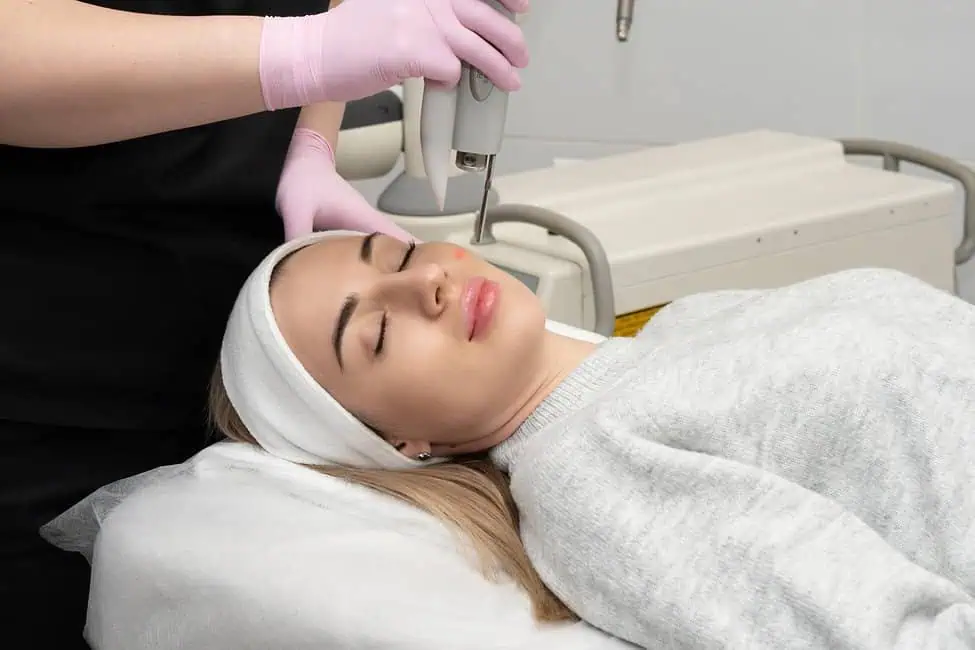Chemical peels, with their roots in ancient civilizations like Egypt, have evolved into a sought-after skincare treatment that promises a luminous and refined complexion. Over the years, the procedure has been refined multiple times, enhancing its effectiveness. Using chemicals on the face can seem intimidating to some, but gaining insight into the process can alleviate these apprehensions. Elle Skin Beauty & Co. stands at the forefront of delivering this distinctive wellness journey. This article will explore the meticulous steps professionals take in performing chemical peels and shed light on what individuals can expect as they embark on this path to revitalized skin.
Preparation Before the Chemical Peel Procedure
Preparing for a chemical peel is as vital as the procedure itself. Proper preparation ensures optimal results, reduces potential complications, and allows smoother recovery. Following these steps set the stage for a successful skin transformation journey.
- Skin Cleansing Regimen: Start with a thorough cleansing routine. Your skincare specialist might recommend specific cleansers that prepare the skin by removing impurities.
- Tapering off Certain Medications: If you’re on medications that affect skin sensitivity, such as specific acne treatments or retinoids, you may need to stop using them a few days or weeks before the procedure.
- Avoiding Sun Exposure: Limit direct sun exposure. Tanned or sunburned skin can negatively impact the peel results and prolong recovery.
- Halting Hair Removal: Refrain from any hair removal treatments, such as waxing, shaving, or laser treatments, at least a week before the procedure. This step reduces the risk of irritation.
- Using Pre-treatment Products: Some dermatologists recommend using specific products that prime the skin for a chemical peel. These might include mild acid-based creams or lotions.
- Staying Hydrated: Drink plenty of water leading up to the procedure. A well-hydrated skin can better handle the peel and heal more efficiently.
- Disclosing All Skincare Products: Be transparent with your specialist about your current skincare products. Some ingredients might not be compatible with the chemicals used in the peel.
- Setting Up a Comfortable Recovery Area at Home: Ensure you have a comfortable relaxing space post-procedure. Stock up on recommended moisturizers, sunscreens, and gentle cleansers.
- Arranging for Transportation: Some peels may leave your skin sensitive or slightly swollen, making driving uncomfortable or unsafe. Consider setting a ride home after the procedure.
- Mentally Preparing for the Change: Understand that your skin will likely look and feel different immediately after the procedure. Mentally, preparing for this change helps with the recovery process.
The Chemical Peel Procedure
The chemical peel procedure, while intricate, can be a transformative experience when executed with precision. Being informed about each step ensures that you’re an active participant in your skincare journey, paving the way for a rejuvenated and radiant complexion.
- Thorough Skin Cleansing: The procedure begins by cleaning the skin meticulously. This step ensures that no dirt, oil, or makeup interferes with applying the chemical solution.
- Selection and Application of the Chemical Solution: Depending on the type of peel (superficial, medium, or deep), a specific chemical solution, such as glycolic acid, TCA, or phenol, is chosen. The specialist then carefully applies this solution to the targeted areas.
- Monitoring Skin’s Reaction: After application, the specialist closely observes the skin’s response to ensure the desired effect and prevent complications.
- Duration of Application: The chemical solution remains on the skin for a set duration, which varies based on the type of peel and the desired results.
- Neutralizing the Solution: Once the specified time elapses for certain peels, a neutralizing solution is applied to halt the chemical process and soothe the skin.
- Applying Post-Peel Ointment or Cream: After removing or neutralizing the chemical solution, a moisturizing ointment or cream is applied to the skin. This step aids in recovery and relieves any immediate stinging or burning sensations.
- Providing Immediate Aftercare Instructions: You’ll receive aftercare instructions before leaving the clinic. This guidance typically includes information on sun protection, skin moisturizing, and signs to watch for, indicating complications.
- Reviewing Expected Sensations: The specialist will inform you about the sensations you might experience shortly after the procedure, such as tingling, burning, or tightness.
What Patients Can Expect During the Chemical Peel Treatment
During a chemical peel treatment, patients often feel sensations like tingling or burning once the solution is applied. The skin may redden, and the procedure’s duration varies based on the peel type. Professionals continuously communicate with patients, ensuring comfort, and after the treatment, the skin may appear sunburned and feel tight or itchy.
- Initial Sensations: Once the chemical solution is applied, you might feel a range of sensations, including tingling, stinging, or slightly burning. These feelings are typical and signal that the peel is actively working.
- Visual Changes: The skin may turn pink or slightly red as the treatment progresses. The skin can even take on a whitish hue in deeper peels, known as “frosting.”
- Duration of the Procedure: Depending on the type of peel, the procedure can last anywhere from a few minutes for superficial peels to over an hour for deeper treatments.
- Communication with the Specialist: The skin care professional will frequently check in throughout the treatment, gauging your comfort level and ensuring you know each step.
- Room Environment: The treatment room typically has a calm ambiance, dim lighting, and soothing music. This environment helps keep patients relaxed.
- Cooling Methods: If the burning sensation becomes too intense, some clinics use fans or cooling packs to provide relief.
- Skin Appearance Post Application: After the chemical solution is neutralized or removed, the skin might appear redder than usual, similar to a sunburn.
- Immediate Aftercare: After the treatment, your specialist might apply a soothing moisturizer or protective ointment to calm the skin and begin healing.
- Post-Treatment Sensations: While the intense sensations diminish after the procedure, you might still experience mild stinging, tightness, or itchiness for a few hours.
- Guidance on Leaving the Clinic: As you prepare to leave, the clinic will guide you on protecting your skin from sunlight and other elements, especially since the skin remains vulnerable immediately after the treatment.
Consult a Professional
Embarking on a chemical peel treatment journey is a decision that comes with its own set of expectations. Being well-informed about what occurs during the procedure ensures no surprises, making the experience more comfortable and empowering. With this knowledge, patients can fully engage with the process, leading to optimal results. Always consult and seek treatment from a professional esthetician to find the best option based on individual needs and conditions.
Takeaway
Elle Skin Beauty & Co. is a beacon of excellence and expertise in the evolving skincare landscape. Chemical peels, with their transformative potential, can unveil a rejuvenated complexion and boost your confidence. Yet, understanding the procedure and aftercare is crucial for optimal results. Our team ensures that your unique needs are met at every step. Ready to embark on your journey to radiant skin? Don’t wait for tomorrow. Contact us today or book an appointment to uncover the best version of yourself with the help of our skilled professionals.



